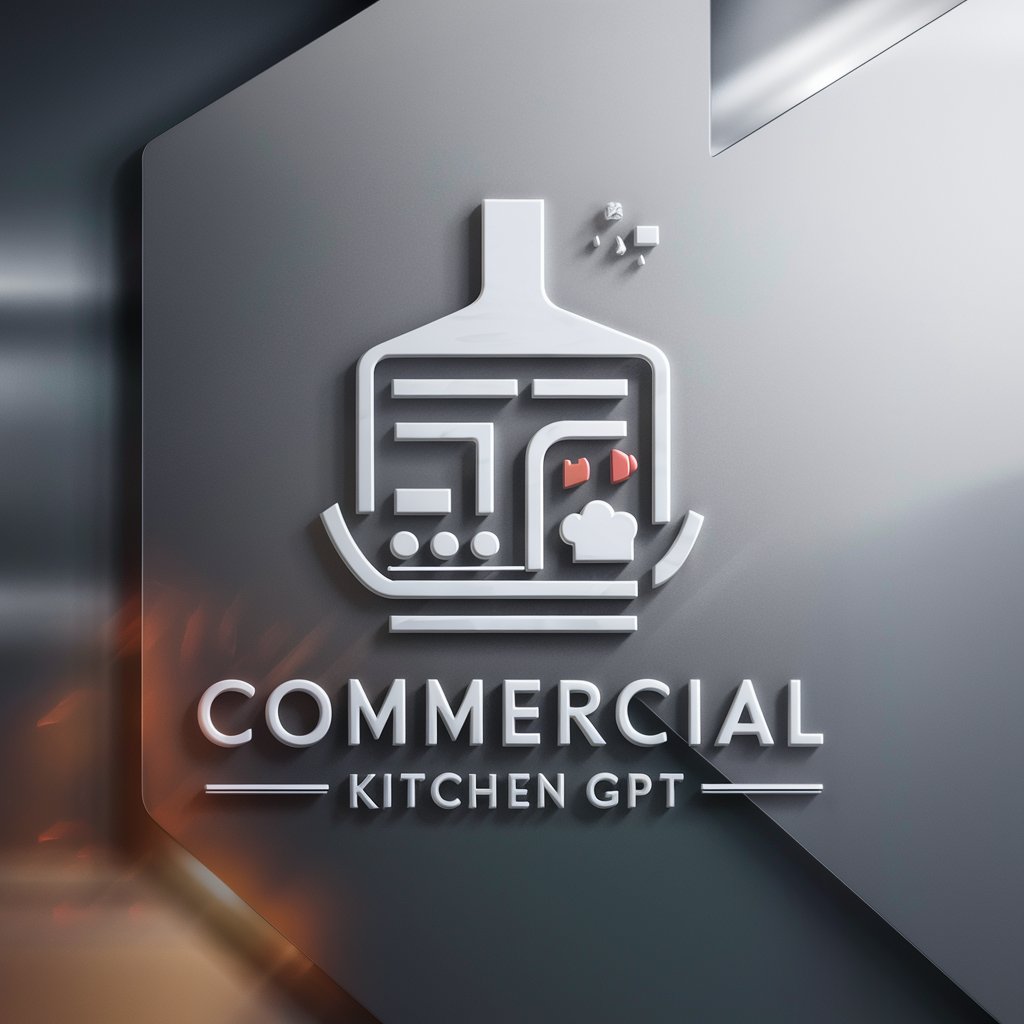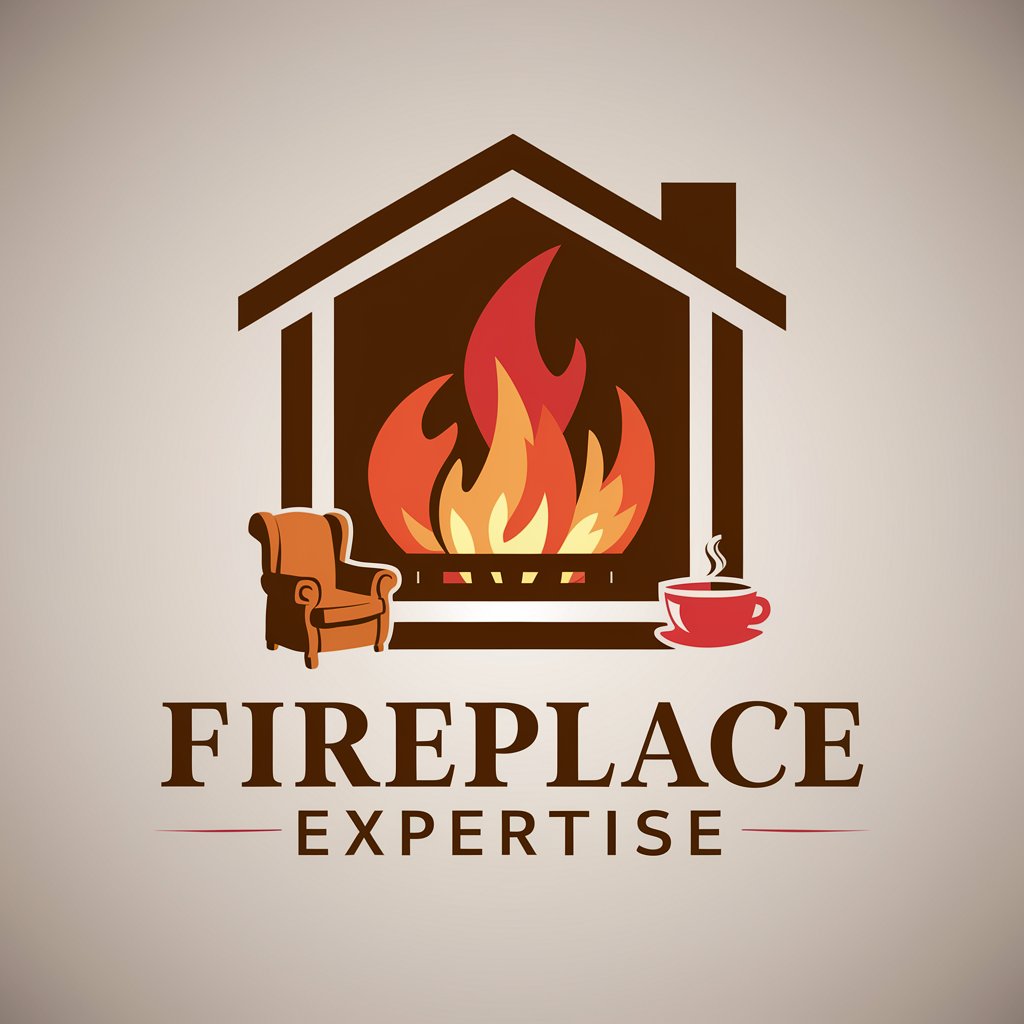Commercial Kitchen - Culinary Expertise Online

Welcome! Let's explore the world of commercial kitchens and foodservice excellence.
AI-powered Culinary Innovation
Can you explain the benefits of using a combi oven in a commercial kitchen?
What are the best practices for maintaining stainless steel kitchen equipment?
How do you design an efficient kitchen layout for a high-volume restaurant?
What are the latest trends in commercial kitchen technology?
Get Embed Code
Overview of Commercial Kitchen
A Commercial Kitchen is designed to handle the demands of the foodservice industry, offering a robust platform for preparing, cooking, and storing food at a large scale. Unlike residential kitchens, commercial kitchens are built to support high-volume production, adhere to strict health and safety regulations, and optimize workflow for efficiency and speed. Key features often include industrial-grade equipment, such as high-capacity ovens, stoves, and refrigeration units; specialized stations for different culinary tasks (prep, cooking, baking, etc.); durable surfaces and materials that can withstand heavy use; and an ergonomic layout that supports the kitchen brigade system. Examples of settings that utilize commercial kitchens include restaurants, hotels, hospitals, educational institutions, and catering operations. Each kitchen is uniquely designed to suit the specific needs of its operation, whether it's a fast-paced restaurant serving hundreds of meals per day or a catering service preparing for large events. Powered by ChatGPT-4o。

Core Functions of Commercial Kitchen
High-Volume Food Production
Example
Restaurants and catering services
Scenario
A commercial kitchen enables restaurants to efficiently prepare diverse menu items simultaneously for large numbers of customers, ensuring quality and speed. For catering services, it allows for the bulk preparation of meals for events, maintaining food safety and consistency.
Food Safety and Hygiene Compliance
Example
Hospitals and educational institutions
Scenario
Commercial kitchens in hospitals and schools are designed to meet rigorous health standards, preventing cross-contamination and ensuring meals are safe for consumption, especially where dietary restrictions and high hygiene standards are critical.
Culinary Research and Development
Example
Fine dining restaurants and food manufacturers
Scenario
These kitchens serve as a testing ground for chefs and food scientists to experiment with new recipes, cooking techniques, and food products, often incorporating cutting-edge equipment and technology to push culinary boundaries.
Target User Groups for Commercial Kitchen Services
Foodservice Professionals
This group includes chefs, restaurateurs, caterers, and kitchen managers who require a functional space designed for efficiency, safety, and quality food production. They benefit from commercial kitchens by maximizing productivity and adhering to industry regulations.
Entrepreneurs in the Food Industry
Startup founders, food truck operators, and culinary innovators looking to launch or expand their food-related business can leverage commercial kitchen facilities to test, develop, and scale their operations without the initial capital investment of building their own kitchen.
Educational and Healthcare Facilities
Schools, colleges, and medical institutions need commercial kitchens to prepare nutritious, safe meals in large quantities. Customized kitchen designs support their unique requirements for dietary needs, meal volume, and health standards.

How to Use Commercial Kitchen
1. Start with a Trial
Begin by visiting yeschat.ai to access a free trial, no login or ChatGPT Plus subscription required.
2. Explore Features
Familiarize yourself with the platform's features, including equipment recommendations, layout planning tools, and culinary technique guides.
3. Define Your Needs
Identify your specific needs or questions related to your commercial kitchen or foodservice operation to make the most out of the tool.
4. Utilize Expert Advice
Take advantage of the tool's expert advice on equipment selection, kitchen design, and efficiency optimization for your culinary setup.
5. Continuous Learning
Keep exploring new updates and features within the tool to stay ahead in the foodservice industry and enhance your kitchen's performance.
Try other advanced and practical GPTs
**Planilha de descrição de títulos**
Optimize content with AI-driven precision

Jimmy Carvalho Robô
Empowering Your Financial Decisions with AI

Installation
Streamlining Installations with AI

Advogado Virtual Trabalhista
Empowering Your Legal Journey with AI

Fireplace
Elevate Your Fireplace Experience with AI

Budismo
AI-powered Buddhist Enlightenment

Asesor Financiero Inteligente
Empowering your financial decisions with AI

Veterinary Expert
Expert Veterinary Knowledge at Your Fingertips

Residential Electrician Business Coach
Empowering Electricians for Business Success

Visionary Lens
Bringing Natural Beauty to Life with AI

Narrador Sorprendente
Craft Captivating Tales with AI

엄마의 포옹
Nurturing Conversations, Anytime

Frequently Asked Questions about Commercial Kitchen
What types of commercial kitchen equipment does this tool recommend?
This tool offers recommendations on a wide range of commercial kitchen equipment, including cooking appliances, refrigeration units, prep stations, and specialized tools tailored to various culinary operations and cuisines.
Can Commercial Kitchen help design my restaurant's layout?
Yes, it provides guidance on optimizing your restaurant's layout, considering factors like workflow efficiency, safety standards, and customer experience, alongside specific equipment placement advice.
How can I improve my kitchen's efficiency with this tool?
By leveraging its insights on equipment placement, workflow optimization, and energy-efficient appliances, you can significantly enhance your kitchen's operational efficiency and reduce overhead costs.
Does Commercial Kitchen offer advice on maintaining kitchen equipment?
Absolutely, it includes maintenance tips and best practices to ensure the longevity and reliability of your commercial kitchen equipment, covering cleaning schedules, routine checks, and troubleshooting.
Can this tool help me stay updated with foodservice industry trends?
Definitely. It provides updates on the latest trends in the foodservice industry, including new cooking technologies, sustainability practices, and evolving consumer preferences, helping you adapt and innovate.
